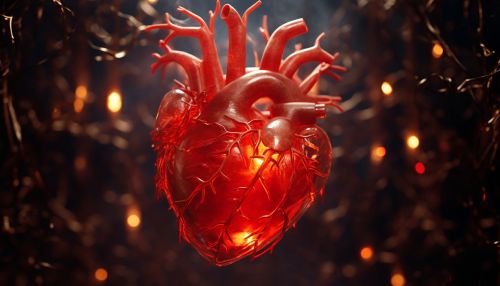Angina pectoris
Overview
Angina pectoris, commonly known as angina, is a type of chest pain caused by reduced blood flow to the heart muscle. This condition is often described as feeling like pressure or squeezing in the chest. The discomfort can also occur in the shoulders, arms, neck, jaw, or back. Angina is a symptom of coronary artery disease, the most common type of heart disease.


Etiology
Angina pectoris is primarily caused by coronary artery disease. This occurs when the coronary arteries, which supply blood to the heart muscle, become narrowed or blocked due to a buildup of atherosclerotic plaques. These plaques are made up of cholesterol, fatty substances, cellular waste products, calcium, and fibrin. When the coronary arteries are narrowed, the blood flow to the heart muscle is reduced, causing the heart to receive less oxygen than it needs. This oxygen shortage leads to ischemia, which results in the chest pain known as angina pectoris.
Types of Angina Pectoris
There are several types of angina, each with its own set of symptoms and risk factors.
Stable Angina
Stable angina, also known as angina pectoris, is the most common type. It occurs when the heart is working harder than usual and is often triggered by physical exertion or stress. The pain usually subsides with rest or medication.
Unstable Angina
Unstable angina is a condition that requires immediate medical attention. It does not follow a predictable pattern and can occur even at rest. It may be a precursor to a heart attack.
Variant Angina
Variant angina, or Prinzmetal's angina, is a rare type caused by a spasm in a coronary artery. The pain can be severe and usually occurs at rest. It often happens between midnight and early morning.
Microvascular Angina
Microvascular angina, or cardiac syndrome X, can be more severe and last longer than other types of angina. It may be a symptom of disease in the small coronary artery blood vessels.
Symptoms
The primary symptom of angina pectoris is chest pain or discomfort. This pain is often described as a pressure, heaviness, tightness, squeezing, burning, or aching across the chest. It can be mistaken for indigestion or heartburn. Angina can also cause pain in the shoulders, arms, neck, throat, jaw, or back. Other symptoms may include shortness of breath, fatigue, nausea, sweating, dizziness, and weakness.
Diagnosis
The diagnosis of angina pectoris involves a thorough medical history, physical examination, and several tests. These tests may include an electrocardiogram (ECG), stress testing, echocardiogram, nuclear scan, coronary angiography, and blood tests.
Treatment
The treatment of angina pectoris aims to reduce symptoms, slow or stop the progression of heart disease, and reduce the risk of heart attack. Treatment options include lifestyle changes, medications, and procedures such as angioplasty and stent placement or coronary artery bypass surgery.
Prognosis
The prognosis for angina pectoris depends on the severity of the underlying coronary artery disease, the patient's overall health, and how well the condition is managed. With appropriate treatment and lifestyle changes, most people with angina can lead a normal life.
Prevention
Prevention of angina pectoris involves controlling risk factors for coronary artery disease. This includes maintaining a healthy weight, eating a heart-healthy diet, getting regular exercise, not smoking, and managing conditions like high blood pressure, high cholesterol, and diabetes.
